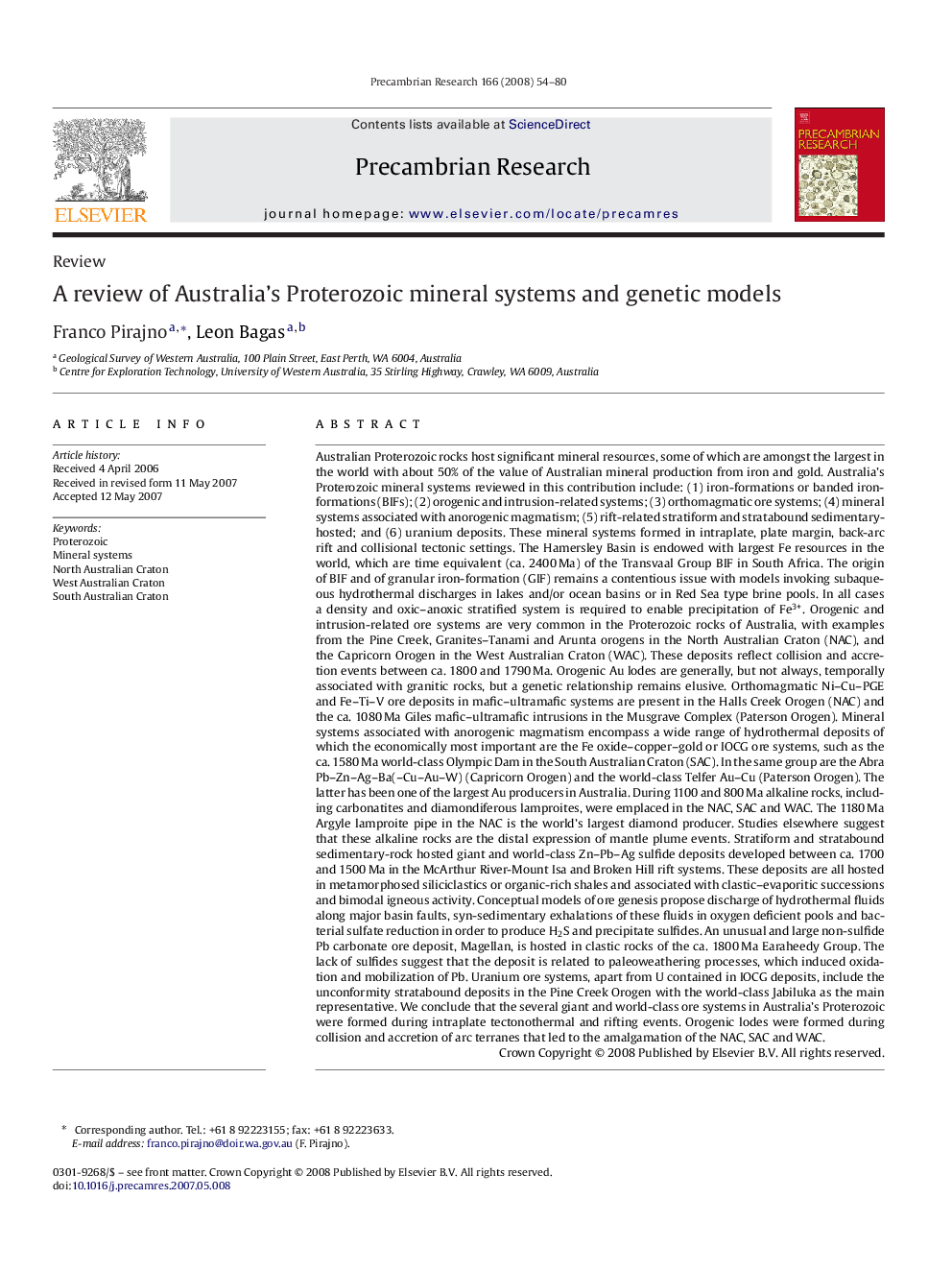| Article ID | Journal | Published Year | Pages | File Type |
|---|---|---|---|---|
| 4724306 | Precambrian Research | 2008 | 27 Pages |
Australian Proterozoic rocks host significant mineral resources, some of which are amongst the largest in the world with about 50% of the value of Australian mineral production from iron and gold. Australia's Proterozoic mineral systems reviewed in this contribution include: (1) iron-formations or banded iron-formations (BIFs); (2) orogenic and intrusion-related systems; (3) orthomagmatic ore systems; (4) mineral systems associated with anorogenic magmatism; (5) rift-related stratiform and stratabound sedimentary-hosted; and (6) uranium deposits. These mineral systems formed in intraplate, plate margin, back-arc rift and collisional tectonic settings. The Hamersley Basin is endowed with largest Fe resources in the world, which are time equivalent (ca. 2400 Ma) of the Transvaal Group BIF in South Africa. The origin of BIF and of granular iron-formation (GIF) remains a contentious issue with models invoking subaqueous hydrothermal discharges in lakes and/or ocean basins or in Red Sea type brine pools. In all cases a density and oxic–anoxic stratified system is required to enable precipitation of Fe3+. Orogenic and intrusion-related ore systems are very common in the Proterozoic rocks of Australia, with examples from the Pine Creek, Granites–Tanami and Arunta orogens in the North Australian Craton (NAC), and the Capricorn Orogen in the West Australian Craton (WAC). These deposits reflect collision and accretion events between ca. 1800 and 1790 Ma. Orogenic Au lodes are generally, but not always, temporally associated with granitic rocks, but a genetic relationship remains elusive. Orthomagmatic Ni–Cu–PGE and Fe–Ti–V ore deposits in mafic–ultramafic systems are present in the Halls Creek Orogen (NAC) and the ca. 1080 Ma Giles mafic–ultramafic intrusions in the Musgrave Complex (Paterson Orogen). Mineral systems associated with anorogenic magmatism encompass a wide range of hydrothermal deposits of which the economically most important are the Fe oxide–copper–gold or IOCG ore systems, such as the ca. 1580 Ma world-class Olympic Dam in the South Australian Craton (SAC). In the same group are the Abra Pb–Zn–Ag–Ba(–Cu–Au–W) (Capricorn Orogen) and the world-class Telfer Au–Cu (Paterson Orogen). The latter has been one of the largest Au producers in Australia. During 1100 and 800 Ma alkaline rocks, including carbonatites and diamondiferous lamproites, were emplaced in the NAC, SAC and WAC. The 1180 Ma Argyle lamproite pipe in the NAC is the world's largest diamond producer. Studies elsewhere suggest that these alkaline rocks are the distal expression of mantle plume events. Stratiform and stratabound sedimentary-rock hosted giant and world-class Zn–Pb–Ag sulfide deposits developed between ca. 1700 and 1500 Ma in the McArthur River-Mount Isa and Broken Hill rift systems. These deposits are all hosted in metamorphosed siliciclastics or organic-rich shales and associated with clastic–evaporitic successions and bimodal igneous activity. Conceptual models of ore genesis propose discharge of hydrothermal fluids along major basin faults, syn-sedimentary exhalations of these fluids in oxygen deficient pools and bacterial sulfate reduction in order to produce H2S and precipitate sulfides. An unusual and large non-sulfide Pb carbonate ore deposit, Magellan, is hosted in clastic rocks of the ca. 1800 Ma Earaheedy Group. The lack of sulfides suggest that the deposit is related to paleoweathering processes, which induced oxidation and mobilization of Pb. Uranium ore systems, apart from U contained in IOCG deposits, include the unconformity stratabound deposits in the Pine Creek Orogen with the world-class Jabiluka as the main representative. We conclude that the several giant and world-class ore systems in Australia's Proterozoic were formed during intraplate tectonothermal and rifting events. Orogenic lodes were formed during collision and accretion of arc terranes that led to the amalgamation of the NAC, SAC and WAC.
